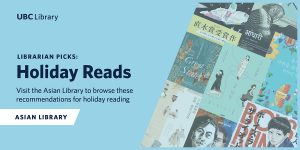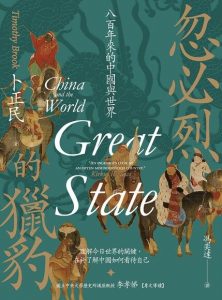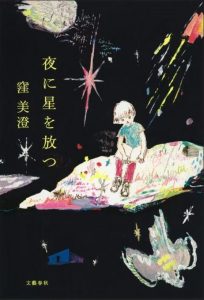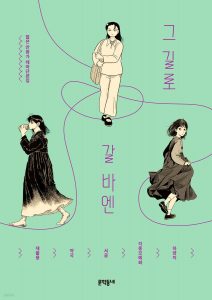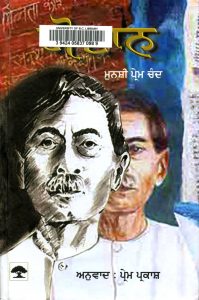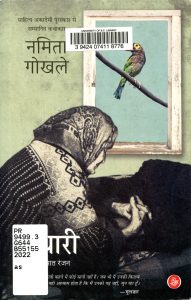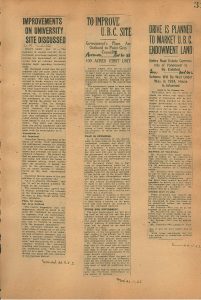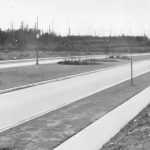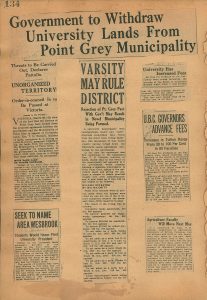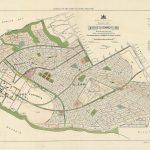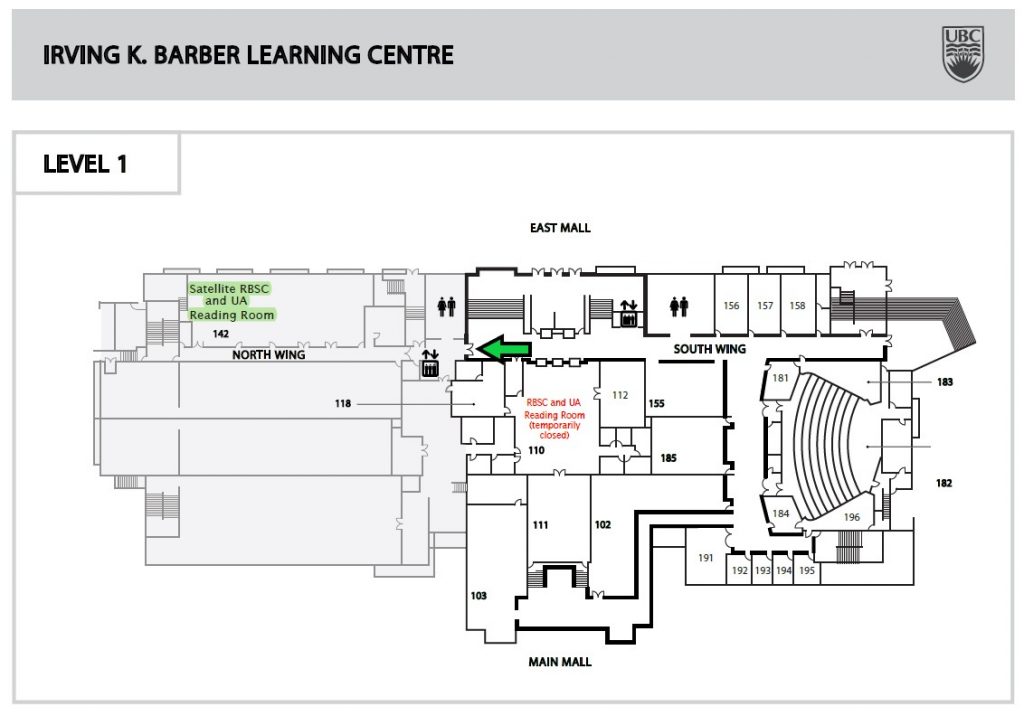Mental Health Awareness Month, observed annually in May, is dedicated to shining a light on mental health concerns, combating the stigma associated with mental illness, and fostering greater access to resources and support for individuals facing mental health challenges. It serves as a rallying point for individuals, organizations, and communities to unite in advancing mental wellness for all.
By fostering education, advocacy, and supportive initiatives, Mental Health Awareness Month underscores the vital message that mental well-being is equally significant as physical health. It underscores the fundamental belief that everyone deserves equitable access to care and resources necessary for their flourishing.
Below are some resources on mental health, mindfulness, and meditation that can be borrowed from UBC Education Library:
Teacher resources
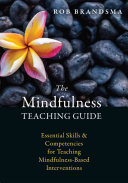 The mindfulness teaching guide: essential skills & competencies for teaching mindfulness-based interventions
The mindfulness teaching guide: essential skills & competencies for teaching mindfulness-based interventions
by Rob Brandsma.
BF321 .B735 2017
You must embody mindfulness in order to teach it. The Mindfulness Teaching Guide offers a thorough and practical guide for mindfulness teachers and professionals, offering a systematic approach to developing the teaching methods, skills, and competencies needed to become a proficient mindfulness teacher.
Mindfulness has captured public attention like never before. From the classroom to the boardroom, everyone is trying to make present moment awareness a part of daily life. Likewise, more and more professionals are adopting mindfulness-based interventions (MBIs) in their work, whether it’s in healthcare, education, counseling, or social services. However, many people lack the resources needed to teach mindfulness well.
In this guide, you’ll learn the three essential skills of being an effective mindfulness teacher: how to guide mindfulness practice, how to explore mindful inquiry, and how to give didactic presentations. Along with teaching underlying theory, this book also offers practical options, suggestions, examples, and even reminder lists so you can swiftly put what you learn to use. The approach in this book is descriptive instead of prescriptive, offering options instead of instructions to help you develop your own style of teaching.
If you want to improve the way you teach mindfulness–no matter what kind of setting you’re in–this book is for you.
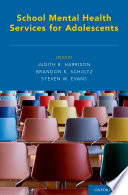 School mental health services for adolescents
School mental health services for adolescents
edited by Judith R. Harrison, Brandon K. Schultz, and Steven W. Evans.
LB3430 .S4546 2017
Evidence-based mental health services are lacking in many school systems, but especially in secondary schools. Adolescents who can benefit from school mental health services are those who experience disruptive behaviour disorders, anxiety, depression, alcohol/drug use, sexual or physical abuse, chronic health problems, crisis situations such as suicidal ideation or attempts, natural disasters, and exposure to community or family violence that can interfere with academic success. Currently, one-half of students with emotional or behavioural disorders drop out of school prior to graduation, pointing to the need to disseminate proven strategies that strengthen effective secondary school services.
School Mental Health Services for Adolescents includes a range of expert guidance on the implementation of school mental health services in secondary schools. The significance of this information cannot be overstated, as only 20% of children and adolescents who need such services receive them. Schools are a logical venue for service provision because emotional and behavioural problems interfere with academic achievement, and a lack of access to mental health services is a major barrier to treatment for youth. Authors discuss services that can be implemented by school-based professionals and methods of overcoming implementation barriers. Chapters cover the history and need for services, issues of identification and referral for treatment in schools, descriptions of evidence-based interventions, proposed service delivery models, assessment strategies, and integration of mental health programs in schools. This book will be a valuable resource for researchers, trainers of school mental health professionals, school administrators and supervisors, and school-based mental health providers including psychologists, counsellors, and social workers.
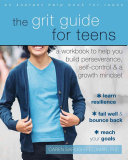 The grit guide for teens: a workbook to help you build perseverance, self-control & a growth mindset
The grit guide for teens: a workbook to help you build perseverance, self-control & a growth mindset
by Caren Baruch-Feldman, PhD.
BF723.R46 B37 2017
https://tinyurl.com/yjhfw25z Full Text Online
As a teen, setting and reaching goals is an important part of growing up. Whether you want to do well in school, get into a good college, make friends, excel in sports, or master the fine arts or music–you know you need to persevere in order to succeed. You’ve probably heard the term “grit” at school or from your parents, but what does it really mean?
Made popular by Angela Duckworth in her New York Times bestseller, the term “grit,” embodies all the characteristics that help people accomplish the things they want, such as self-control, tenacity, and the ability to fail well. Using the skills outlined in this book, you’ll develop both grit and a growth mind-set–a way of thinking that focuses on improvement and hard work in order to achieve any goal you set for yourself. You’ll learn how to make grit an everyday habit, turn disappointments into opportunities, embrace challenges, manage stress, and be the very best version of you that you can be.
Studies show that grit isn’t something you have to be born with–it can be taught and learned! This book will give you everything you need to get gritty, open your mind to all life’s possibilities, and succeed in everything you do.
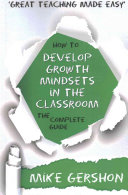 How to develop growth mindsets in the classroom: the complete guide
How to develop growth mindsets in the classroom: the complete guide
by Mike Gershon.
LB1060 .G46 2016
How can we help our students become more resilient, more determined and happier to embrace challenges? What can we do to change how they think about mistakes? And how can we help them appreciate that targeted effort is the number one path to mastery? In this timely and compelling book, bestselling author Mike Gershon presents you with everything you need to develop growth mindsets in your classroom. Calling on a wealth of teaching and training experience, Mike sets out the different areas of pedagogy you need to focus on, then gives you the practical strategies you can use to make change happen. With more than 200 exemplar questions and over sixty strategies, activities and techniques, this book is your go-to guide for establishing, cultivating and sustaining growth mindsets in the students you teach. It’s the starting point for your growth mindsets journey.
Chapters Include: – Getting the Language Right – Changing how Students Perceive Mistakes – Targeting Student Effort – Giving Great Feedback – Thinking About Thinking – Creating a Challenge Culture – Engaging Parents with Growth Mindsets.
Picture Books
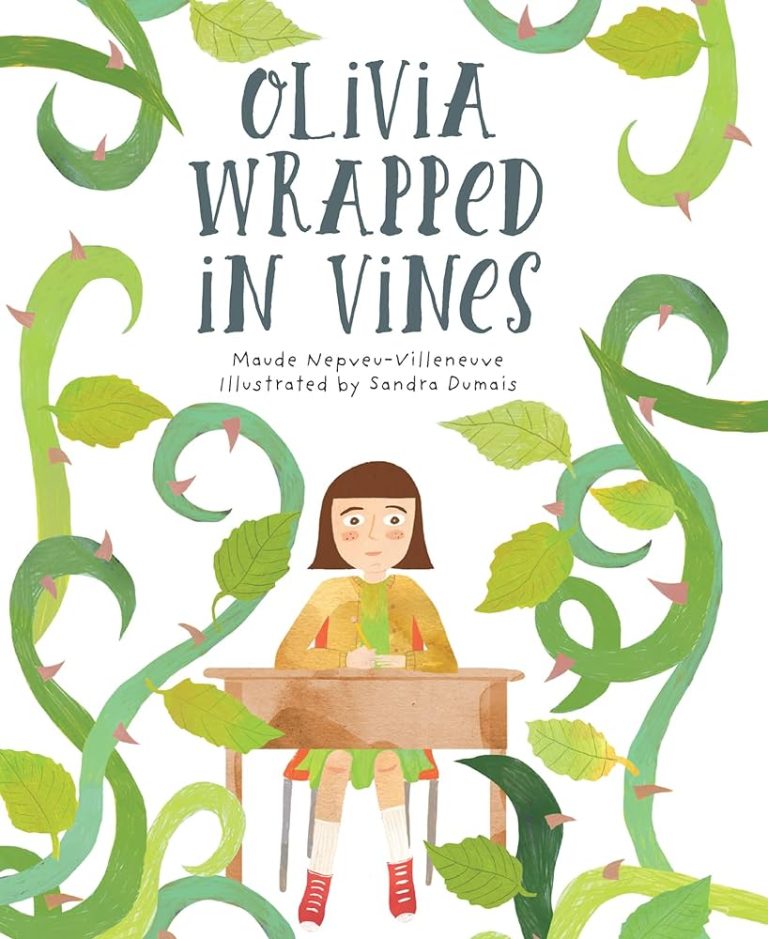 Olivia wrapped in vines
Olivia wrapped in vines
Maude Nepveu-Villeneuve; illustrations by Sandra Dumais; translated by Charles Simard.
PZ7.1.N455 Ol 2022
The world is a really big place for little kids.
When Olivia starts to feel overwhelmed by her big feelings, she sprouts vines. They are thorny and twisty and make it impossible for Olivia to do the things she loves to do, like ride her bike or play with her friends. Plus, no one wants to come near a giant ball of thorns. Luckily, Olivia has a very special teacher. Someone who sees past the prickly and the pokey to the upset little girl and helps Olivia learn to manage the vines.
This quirky picture book is the perfect introduction to the idea of anxiety and those big feelings that seem impossible to manage. Olivia’s teacher provides some tricks to help manage the feelings, and a special message at the end of the story encourages young readers to think productively about their own anxieties.
 Living with Viola
Living with Viola
by Rosena Fung.
PZ7.7.F858 Lv 2021
Heartbreakingly honest and quietly funny, this #ownvoices graphic novel from a debut creator is a refreshingly real exploration of mental health, cultural differences, and the trials of middle school. Livy is already having trouble fitting in as the new girl at school–and then there’s Viola. Viola is Livy’s anxiety brought to life, a shadowy twin that only Livy can see or hear. Livy tries to push back against Viola’s relentless judgment, but nothing seems to work until she strikes up new friendships at school. Livy hopes that Viola’s days are numbered. But when tensions arise both at home and at school, Viola rears her head stronger than ever. Only when Livy learns how to ask for help and face her anxiety does she finally figure out living with Viola. Rosena Fung draws on her own early experiences with anxiety and the pressures of growing up as the child of Chinese immigrant parents to craft a charming, deeply personal story that combines the poignancy of Raina Telgemeier’s Guts with the wacky humor of Lumberjanes. Exuberant, colorful art brings Livy’s rich imaginative world–filled with everything from sentient dumplings to flying unicorns–to life on the page.”– Provided by publisher.
 I will be okay: my name is Max, and all day long, I know I’ll be okay
I will be okay: my name is Max, and all day long, I know I’ll be okay
by Laurie Wright; illustrations by Ana Santos.
BF697.5.S47 W85 2018
Everyday situations can cause hard-to-handle feelings for kids.
Things like:
- Feeling grumpy but having to go to school anyway
- being scared in the dark at nighttime
- having a babysitter when you don’t want your parents to leave
Kids desperately want to know they’ll be okay, but adults just telling them doesn’t work.
Reinforce the idea that children are not helpless, and can do things for themselves to help them feel ‘okay’ again.
Worried about mom and dad going out for the night?
Make them a surprise present to find when they return!
Scared of a thunderstorm?
Hide in a fort with a friend.
Start practising the ‘OK’ sign with your kids as you read this book and help them realize that they WILL be okay!
 The rabbit listened
The rabbit listened
by Cori Doerrfeld.
PZ7.D6934 Rb 2018
When something sad happens, Taylor doesn’t know where to turn. All the animals are sure they have the answer. The chicken wants to talk it out, but Taylor doesn’t feel like chatting. The bear thinks Taylor should get angry, but that’s not quite right either. One by one, the animals try to tell Taylor how to act, and one by one they fail to offer comfort. Then the rabbit arrives. All the rabbit does is listen . . . which is just what Taylor needs.
With its spare, poignant text and irresistibly sweet illustration, The Rabbit Listened is about how to comfort and heal the people in your life, by taking the time to carefully, lovingly, gently listen.
 I am peace: a book of mindfulness
I am peace: a book of mindfulness
by Susan Verde; art by Peter H. Reynolds.
PZ7.1.V46 Im 2017
Mindfulness means being fully in the present moment. Children can learn how to manage their emotions, make good choices, and balance their busy lives by learning to be mindful, express emotions through speech, find empathy through imagination, and wonder at the beauty of the natural world.
From the bestselling team that created I Am Yoga, I Am Human, I Am Love, and I Am One comes a gentle expression of the tenets of mindfulness, encouraging children to breathe, taste, smell, and be present in the here and now.
Includes a guided meditation.
 You hold me up
You hold me up
Monique Gray Smith and Danielle Daniel.
PS8613.R3894 Y69 2017 Full Text Online
This vibrant picture book, beautifully illustrated by celebrated artist Danielle Daniel, encourages children to show love and support for each other and to consider each other’s well-being in their everyday actions. Consultant, international speaker and award-winning author Monique Gray Smith wrote You Hold Me Up to prompt a dialogue among young people, their care providers and educators about reconciliation and the importance of the connections children make with their friends, classmates and families.
This is a foundational book about building relationships, fostering empathy and encouraging respect between peers, starting with our littlest citizens.
 My heart fills with happiness
My heart fills with happiness
Monique Gray Smith; illustrations by Julie Flett.
PZ4.9.G784 Mh 2016 Full Text Online
The sun on your face. The smell of warm bannock baking in the oven. Holding the hand of someone you love. What fills your heart with happiness? This beautiful board book, with illustrations from celebrated artist Julie Flett, serves as a reminder for little ones and adults alike to reflect on and cherish the moments in life that bring us joy.
International speaker and award-winning author Monique Gray Smith wrote My Heart Fills with Happiness to support the wellness of Indigenous children and families, and to encourage young children to reflect on what makes them happy.
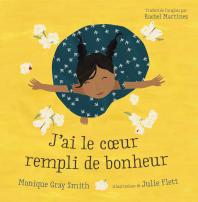 J’ai le cœur rempli de bonheur
J’ai le cœur rempli de bonheur
Monique Gray Smith ; illustrations de Julie Flett ; traduit de l’anglais par Rachel Martinez. French
Full Text Online
Qu’est-ce qui te remplit le coeur de bonheur ? Le soleil sur ton visage ? L’odeur de la banique qui cuit au four ? Tenir la main d’une personne que tu aimes ? Ce magnifique album cartonné, illustré par la talentueuse artiste Julie Flett, rappelle aux petits et aux grands de penser aux moments de la vie qui leur apportent de la joie et d’en profiter.
La conférencière et autrice de réputation internationale Monique Gray Smith a écrit J’ai le coeur rempli de bonheur pour soutenir le bien-être des enfants et des familles autochtones, et pour encourager les bambins à chérir les moments qui les rendent heureux.
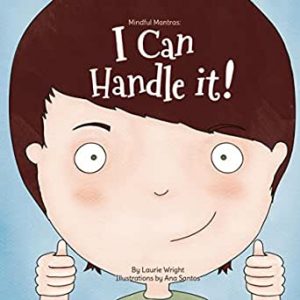 I can handle it!
I can handle it!
by Laurie Wright; Illustrations by Ana Santos.
BF723.E6 W75 2016
“Can Sebastien handle his problems? Of course he can, with the help of a mindful mantra! He could try something silly, or he could try something funny! Chances are whatever his problem may be, he can handle it.
Help your child learn to deal with difficult emotions along with Sebastien, and provide a tool for lifelong confidence! Depression and anxiety don’t discriminate and our kids need help. ‘I Can Handle It’ equips children with a necessary skill in order to alleviate everyday anxieties that arise in their lives.”–Back cover.
Juvenile Literature: Non-Fiction
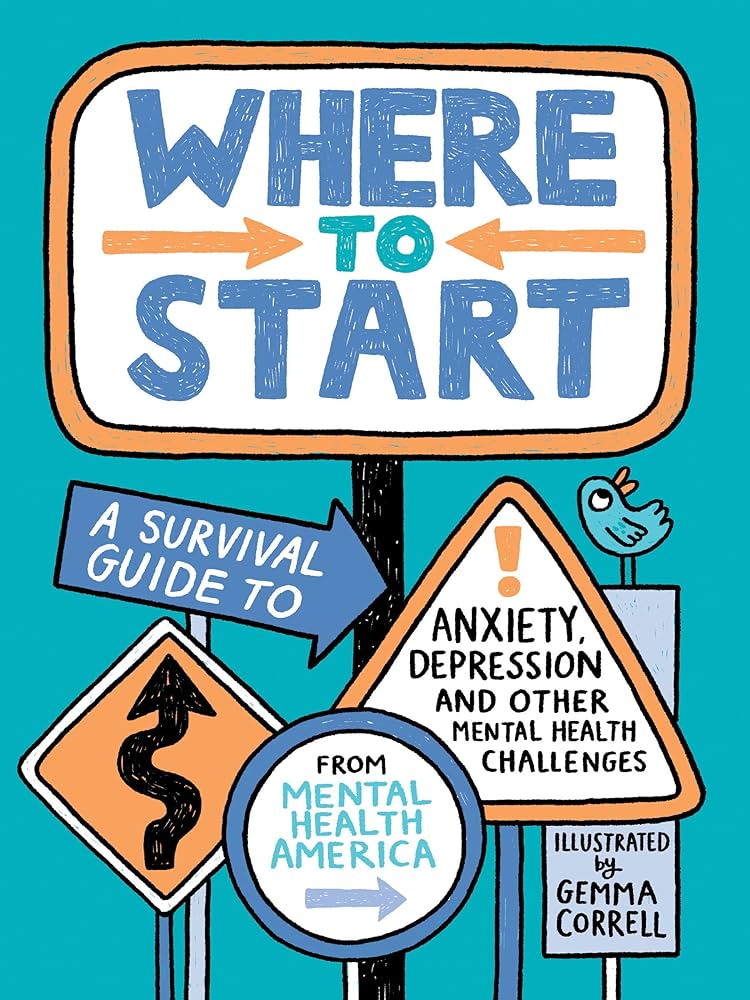 Where to start: a survival guide to anxiety, depression, and other mental health challenges
Where to start: a survival guide to anxiety, depression, and other mental health challenges
from Mental Health America; illustrated by Gemma Correll.
Call number: in process
A comforting and useful resource for anyone who’s struggling emotionally and looking for help, from the nation’s leading community-based nonprofit dedicated to addressing the needs of those living with mental illness
It can be extremely hard to figure out what’s going on in our own heads when we are suffering—when we feel alone and unworthy and can’t stop our self-critical inner voice. And it’s even more difficult to know where to go for answers. But this book can help. Here you’ll find clear, honest, jargon-free information about all the most common mental illnesses, including a first self-assessment test; tips on how to get help and how to talk about your mental health with friends, family, and medical professionals; and tools for staying healthy. Plus, the book’s accessible and reassuring information and resources are interspersed with insightful and very funny drawings by acclaimed cartoonist Gemma Correll. This will be a book that you’ll cherish.
 Heads up: changing minds on mental health
Heads up: changing minds on mental health
by Melanie Siebert; illustrations by Belle Wuthrich.
WS463 .S54 2020
Featuring real-life stories of people who have found hope and meaning in the midst of life’s struggles, Heads Up: Changing Minds on Mental Health is the go-to guide for teenagers who want to know about mental health, mental illness, trauma and recovery. For too long, mental health problems have been kept in the shadows, leaving people to suffer in silence, or worse, to be feared, bullied or pushed to the margins of society where survival is difficult.
This book shines a light on the troubled history of thinking about and treating mental illness and tells the stories of courageous pioneers in the field of psychiatry who fought for more compassionate, respectful and effective treatments. It provides a helpful guide to the major mental health diagnoses along with ideas and resources to support those who are suffering. But it also moves beyond a biomedical focus and considers the latest science that shows how trauma and social inequality impact mental health. The book explores how mental health is more than just “in our heads” and includes the voices of Indigenous people who share a more holistic way of thinking about wellness, balancing mind, body, heart and spirit. Highlighting innovative approaches such as trauma-informed activities like yoga and hip-hop, police mental health teams, and peer support for youth, Heads Up shares the stories of people who are sparking change
 (Don’t) call me crazy: 33 voices start the conversation about mental health
(Don’t) call me crazy: 33 voices start the conversation about mental health
edited by Kelly Jensen.
WS462 .D66 2018
What does it mean to be crazy? Is using the word crazy offensive? What happens when a label like that gets attached to your everyday experiences?
To understand mental health, we need to talk openly about it. Because there’s no single definition of crazy, there’s no single experience that embodies it, and the word itself means different things—wild? extreme? disturbed? passionate?—to different people.
In (Don’t) Call Me Crazy, thirty-three actors, athletes, writers, and artists offer essays, lists, comics, and illustrations that explore a wide range of topics:
their personal experiences with mental illness,
how we do and don’t talk about mental health,
help for better understanding how every person’s brain is wired differently,
and what, exactly, might make someone crazy. If you’ve ever struggled with your mental health, or know someone who has, come on in, turn the pages . . . and let’s get talking.
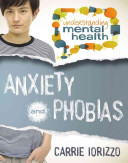 Anxiety and phobias
Anxiety and phobias
Carrie Iorizzo.
WM178 .I587 2014
“Anxiety disorders, such as phobias, panic disorder, and obsessive-compulsive disorder are the most common group of mental illnesses in the United States.
Recent studies suggest eight percent of U.S. teenagers suffer from an anxiety disorder. This informative title examines different anxiety disorders, including their causes, symptoms, effects, and treatment options.
A chapter on caring for others discusses how anxiety and phobias affect young people with siblings and parents who have the disorder”–
 Mental health [6 pack]
Mental health [6 pack]
Jacqueline Nemni.
WM30.1 .N45 2015
In Canada, 3.2 million 12-to-19-year-olds are at risk of developing depression. Only 1 in 5 Canadian children who need mental health services ever receives professional help.
In Canada, 50 percent of mental disorders develop by age 14 and 75 percent develop by age 24.
After accidents, suicide is the 2nd leading cause of death for young people in Canada.
